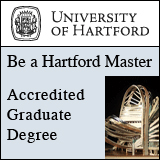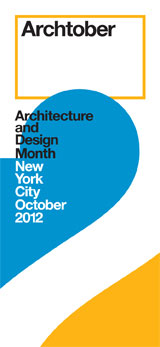
Today’s News - Tuesday, October 16, 2012
• A most impressive international shortlist for the redevelopment of Melbourne's iconic Flinders Street Station (starchitects included).
• Campbell (he's back!) weighs in on Gehry's Eisenhower Memorial: "The proposal is full of talent and the best of intentions. For some other purpose, this could be a great and gutsy design. Another problem is the question 'Why Eisenhower?'"
• Rochon, meanwhile, ponders the massive Mirvish-Gehry development and "what makes Gehry great": "What lessons can be drawn from his greatest works, and how can we make sure they don't get lost in Toronto?"
• King considers Snøhetta's conceptual design for the San Francisco Warriors arena: "Best of all, it understands that the Embarcadero doesn't need big buildings. It needs enticing connections to the bay."
• Calys contemplates the arena's concept: while it "addresses the bigger planning issues," it is "not yet architecture, but it does represent a sensitive and inventive response to several vexing problems and therefore deserves honest consideration."
• Davidson x 2: he talks to Lopate about NYC's urban development under Bloomberg: "the city's 2030 Plan has really helped shape the policy and the landscape of the Big Apple."
• He tackles Cornell NYC Tech, "the future birthplace of tools we don't yet know we need," and Four Freedoms Park: "Mayne and Kahn came here and wound up undermining the very essence of what they mean to honor: the messy exuberance of the unchained mind."
• Merrick mulls over Hadid's new Pierresvives that "already seems dated": it is "a slogan, a living stone that is part of the rebranding of Montpellier," but "has little to do with her latest exquisite experimental forms."
• Schumacher visits H&deM's Caixa Forum: the "power station-turned-museum is a looker...a gutsy, sculptural structure distinct from the glassy weightlessness that is so often the fashion for museums" (great pix).
• An eyeful of Viñoly's Mathematical Institute at Oxford "that pays respect to both its environmental and its historic context" - and just topped out.
• Berger talks tall towers and "the adrenaline tourism game": "They're playing a revitalized role in this age of urbanization...more than high-rise playgrounds; they carry the burden of being important civic symbols...and as such should be about more than selling hot dogs and t-shirts."
• Ledgard has a most interesting (at times amusing) encounter with Lord Foster, who finds himself "poised halfway from the Victorians to the space age" and "builds what he preaches" (thanks to a comic book hero).
• In Uganda, Adjaye and curator of contemporary African art Njami have joined forces in a "brilliant project which has already changed the face of many African cities, and hopefully will change Kampala."
• Davies digs deep into the success of NYC's High Line, and considers whether other cities can accomplish the same: "There're plenty of more modest instances of disused infrastructure being converted into parks, too" (most excellent links back him up).
• Corner contemplates his ambitions for Olympic Park "that he hopes will replicate the High Line's impact in east London."
• Landscape architect Johnston discusses the "landscape of autism": the "main difference between people with ASD and neuro-typical people is their perception of the world around them and their sense of self in space and time."
• Hawthorne shares his heartwarming experience watching the space shuttle Endeavour's "voyage into L.A.'s public space": its "crowd-pleasing tour...efficiently demolished a series of myths about Los Angeles" and how its "wide boulevards can absorb almost anything without losing their basic personalities" (no mention of the 400 trees that had to be cut down).
• The number of federal LEED-certified projects is growing, but there's a lot of grousing about the system, with calls to "change how things are done and do away with using the LEED system."
• Call for entries: Vectorworks Young Architects Student Scholarship for U.S. architecture students + Creative Minds Monthly Design Competition.
| |



|
|
|
To subscribe to the free daily newsletter
click here
|
Shortlist Revealed for Melbourne's Flinders Street Station Architecture Competition: It is due to this ‘starchitect’ interest that competition jury chair...is confident that the redeveloped icon will become a major success. -- Ashton Raggatt McDougall; John Wardle Architects/Grimshaw; HASSELL/Herzog & de Meuron; NH Architecture; Eduardo Velasquez/Manuel Pineda + Santiago Medina; Zaha Hadid Architecture/BVN Architecture- DesignBuild Source (Australia) |
Pressing pause, for cause, on the Eisenhower Memorial: It’s way too big. It’s too cartoony. Someone should scrub the design and start over...The proposal is full of talent and the best of intentions. But it’s the wrong thing to do...For some other purpose, this could be a great and gutsy design. But Eisenhower gets lost in it...Another problem...is the question “Why Eisenhower?” By Robert Campbell -- Frank Gehry; AECOM- Boston Globe |
King Street vision: What makes Frank Gehry great: What lessons can be drawn from his greatest works, and how can we make sure they don’t get lost in Toronto? The Gehry-Mirvish development has created more buzz on the streets than I can ever recall... By Lisa Rochon- Globe and Mail (Canada) |
Warriors SF arena framework taking shape: Warriors reveal conceptual and financial plans for piers: ...the architects have come up with an approach that redefines what the Embarcadero could be...all this is nothing more than a start. But it's an intriguing start. Best of all, it understands that the Embarcadero doesn't need big buildings. It needs enticing connections to the bay. By John Coté and John King -- Snøhetta; AECOM [images]- San Francisco Chronicle |
First glimpse of the Warriors arena: Snohetta unveils a concept: ...responds to actual constraints and issues on this difficult waterfront site...does address the bigger planning issues...What was shown today is not yet architecture...but it does represent a sensitive and inventive response to several vexing problems and therefore deserves honest consideration. By George Calys -- AECOM [images]- San Francisco Examiner |
Urban Development During the Bloomberg Years: New construction, zoning laws and bike lanes have visibility transformed city neighborhoods, but has it changed the city’s character? Justin Davidson [tells] Leonard Lopate that the city’s 2030 Plan has really helped shape the policy and the landscape of the Big Apple.- WNYC.org |
Cornell’s New East River Campus Aims to Foster Human Creativity: Cornell NYC Tech, the future birthplace of tools we don’t yet know we need...Four Freedoms Park...by the great Louis Kahn...Yet Kahn’s design is not about freedom...Mayne and Kahn...came here and wound up undermining the very essence of what they mean to honor: the messy exuberance of the unchained mind. By Justin Davidson -- Morphosis/Thom Mayne; Skidmore, Owings & Merrill (SOM)- New York Magazine |
Beyond bricks and mortar: Zaha Hadid's latest structure is impressive but already seems dated: ...originally designed in 2004...In political terms, the building [Pierresvives] is a slogan, a living stone that is part of the rebranding of Montpellier...has little to do with her latest exquisite experimental forms... By Jay Merrick [images]- Independent (UK) |
Madrid's Caixa Forum: Often, we have a hard time imagining contemporary architecture sitting next to old buildings...The power station-turned-museum...is a looker in a way the other [museums] are not...a gutsy, sculptural structure...is surely distinct from the glassy weightlessness that is so often the fashion for museums. By Mary Louise Schumacher -- Herzog & de Meuron; Patrick Blanc [images]- Milwaukee Journal Sentinel |
Rafael Viñoly's Green-Roofed Mathematical Institute at Oxford University Seeks BREEAM Excellent: ...designed to amalgamate the formerly scattered mathematical department in one central and private location that pays respect to both its environmental and its historic context. [images]- Inhabitat |
As the world's towers turn: The world's towers stop off in Seattle to discuss the role of tech and storytelling in the adrenaline tourism game...They're playing a revitalized role in this age of urbanization...more than high-rise playgrounds; they carry the burden of being important civic symbols...and as such should be about more than selling hot dogs and t-shirts. By Knute Berger -- World Federation of Great Towers- Crosscut (Seattle) |
Norman Foster's New World: A spaceport, a new solar-powered city, and how to save a slum: J.M Ledgard meets a towering figure in architecture and finds him poised halfway from the Victorians to the space age...builds what he preaches...A defining influence was Dan Dare, in the British comic The Eagle... -- Foster + Partners- The Economist / More Intelligent Life (UK) |
Uganda: Street Seduction - When Artists Cozy up With Architects: Art at Work is a brilliant project...a result of...David Adjaye, and curator of contemporary African art, Simon Njami, joining their unique artistic potential in a project which has already changed the face of many African cities, and hopefully will change Kampala...The pavilion comprises three gallery spaces...- AllAfrica |
Can other cities emulate the success of New York’s High Line? ...elevated linear park shows how “non-economic” infrastructure can transform an area. But the idea is unlikely to drive change to the same degree elsewhere...There’re plenty of more modest instances of disused infrastructure being converted into parks, too. By Alan Davies- Crikey (Australia) |
Designer behind New York's High Line reveals plans for Olympic Park: James Corner has revealed his ambitions for the area of the Queen Elizabeth Olympic Park that he hopes will replicate its impact in east London....The High Line [has] prompted other cities around the world to investigate the feasibility of repeating the concept. -- James Corner Field Operations [image]- Guardian (UK) |
Interview with Brian Johnston on the Landscape of Autism: How do people with ASD (autism spectrum disorders) interact with the built environment? "The main difference between people on the Autism spectrum...and neuro-typical people, is their perception of the world around them and their sense of self in space and time...If the spaces aren’t carefully assembled, parents just won’t take their kids there, it’s as simple as that." -- Square Root Design Studio [images, links]- The Dirt/American Society of Landscape Architects (ASLA) |
Endeavour's voyage into L.A.'s public space: The shuttle's crowd-pleasing tour illustrates how the city's wide boulevards can absorb almost anything without losing their basic personalities...efficiently demolished a series of myths about Los Angeles...It's a pity that in recent decades we have asked so little of these streets. Every time we need them...to adapt to new uses or temporary disruptions or celebrations, they seem to be up to the challenge. By Christopher Hawthorne [images]- Los Angeles Times |
Number of federal LEED-certified projects surges: rapid growth in federal agencies mirrors what is happening in the private sector...industry groups — and lawmakers supporting them — are pressing the General Services Administration (GSA) and other policymakers to change how things are done and do away with using the LEED system. -- Green Globes; International Living Building Challenge- Federal Times |
-- Call for entries: Vectorworks Young Architects Student Scholarship: New scholarship program for U.S. architecture students; application deadline: November 30
-- Creative Minds Monthly Design competition deadline: October 26- Nemetschek Vectorworks |

|
-- Grieg Architects: Oseana - Art & Culture Center, Os (Bergen), Norway
-- 3XN: The Arch, Mandal, Norway
-- Wingårdh Arkitektkontor: Spira Performing Arts Center, Jönköping, Sweden |
|
|
Note: Pages will open in a new browser window.
External news links are not endorsed by ArchNewsNow.com.
Free registration may be required on some sites.
Some pages may expire after a few days.
© 2012 ArchNewsNow.com

